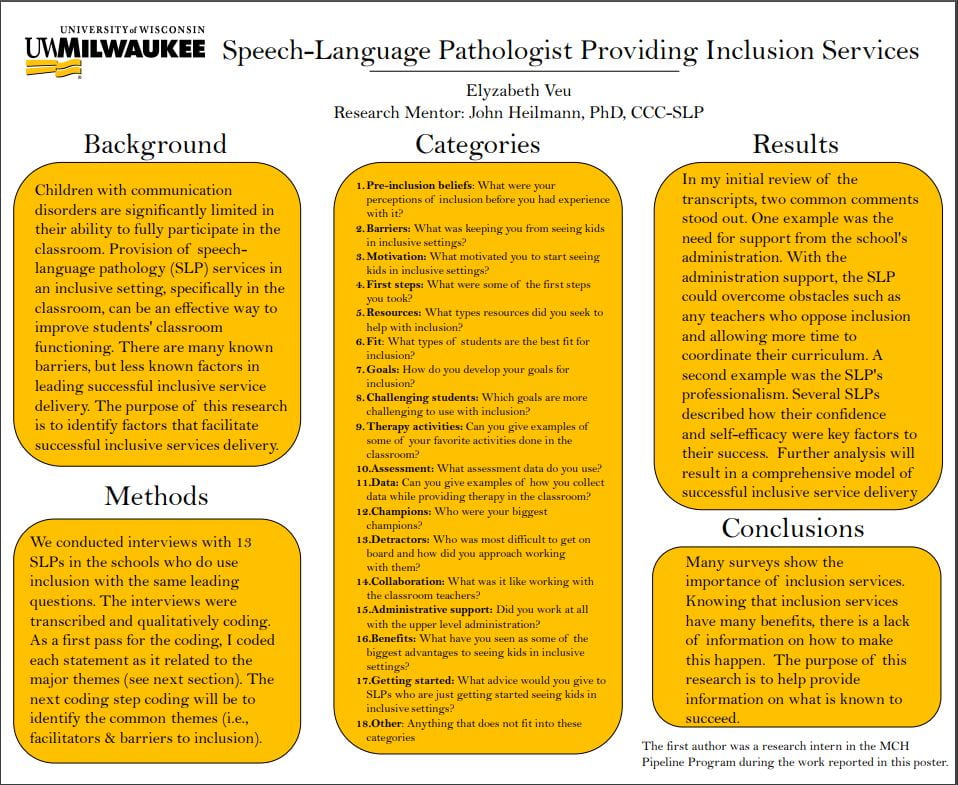Elyzabeth Veu, “Speech-Language Pathologist Providing Inclusion Services”
Mentor: John Heilmann, Communication Sciences & Disorders
Children with communication disorders are significantly limited in their ability to participate in the classroom fully. Provision of speech-language pathology (SLP) services in an inclusive setting, specifically in the classroom, can be an effective way to improve students’ classroom functioning. There are many known barriers, but less known factors in leading successful inclusive service delivery. The purpose of this research is to identify factors that facilitate successful inclusive services delivery. We conducted interviews with 13 SLPs in the schools who do use inclusion with the same leading questions. Completing qualitative analysis leads to the discovery of systematic general trends. The trends can be generalized to Speech-Language Pathologists who have not used inclusion. Preliminary analyses have revealed several factors that promote successful inclusive service delivery. One example is the need for support from the school’s administration board. With the administration support, the SLP can overcome obstacles such as any teachers who oppose inclusion and allowing more time to coordinate their curriculum. A second example is the SLP’s professionalism. If they can be confident in themselves and can demonstrate self-efficacy, they are sure to succeed. Further analysis will result in a comprehensive model of successful inclusive service delivery. Inclusion services provide many different benefits and are possible with the right combination of factors. With the right combination of factors, an SLP can overcome many obstacles and help kids excel in the classroom setting.
Click the thumbnail below to open the full sized poster in a new tab.

Great project, I wonder if you will be able to get a larger sample size in the future. I think it would be interesting to compare the results between different school districts, counties, or states. Thanks for sharing your research!